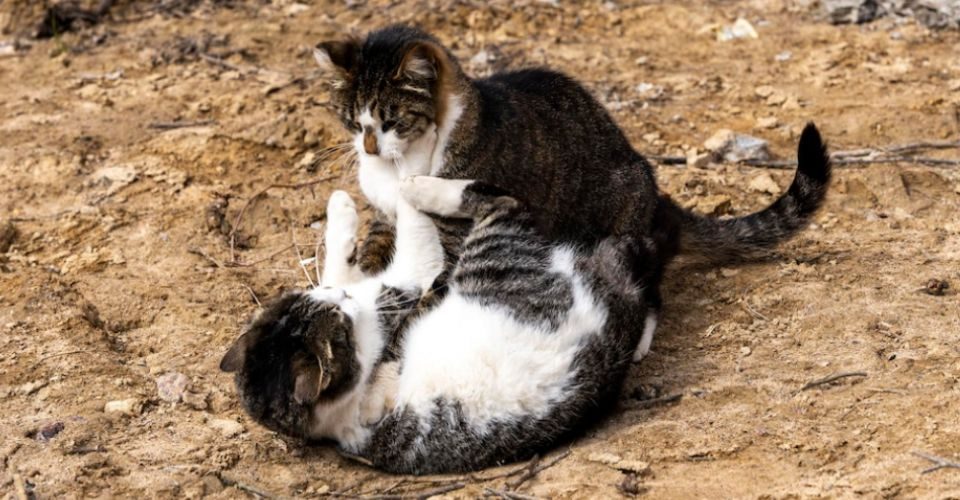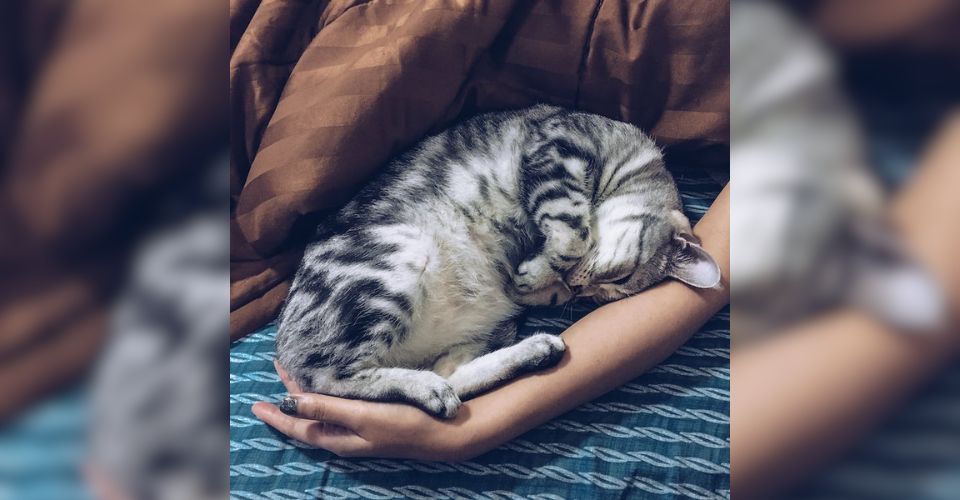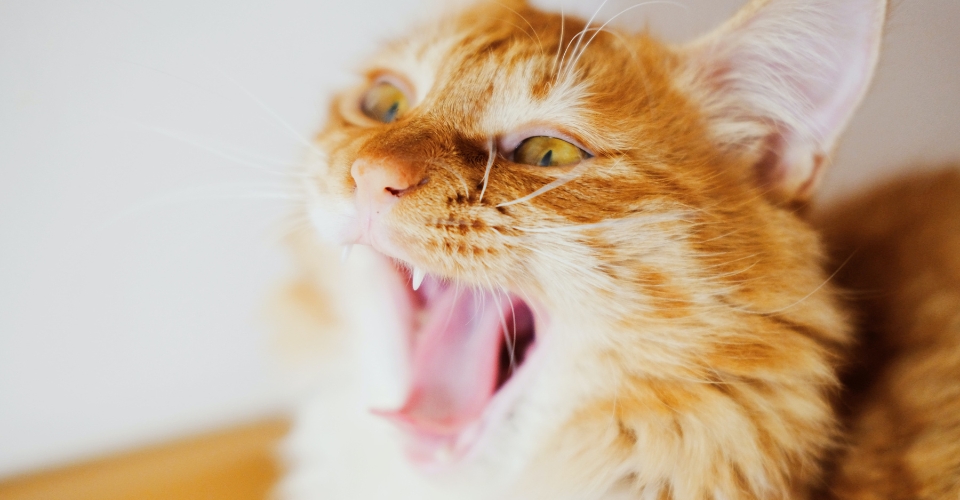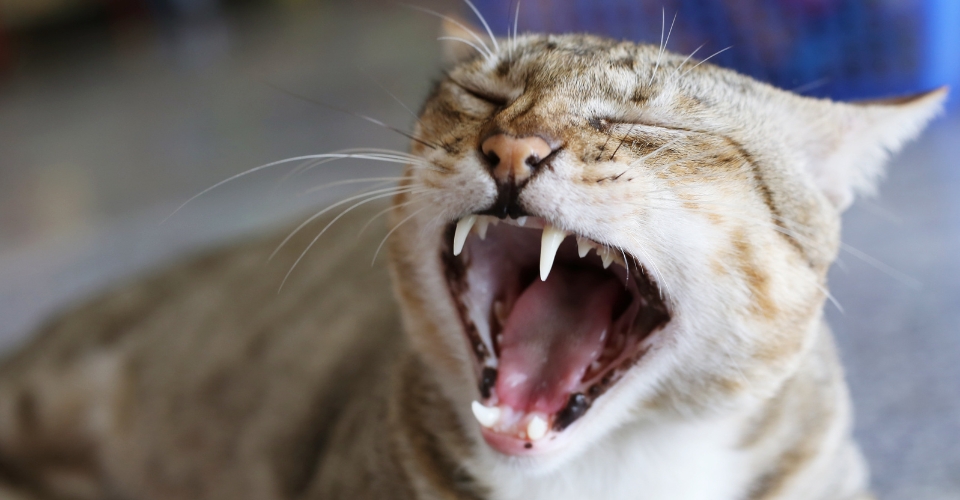Are you trying to figure out whether your cats are playing or fighting for fun? A cat’s behavior can be hard to interpret, particularly when there is a mix of ages, breeds, temperaments, and unrelated individuals in one household.
Playing is important for all cats, either young or old. It has a positive impact on cats’ emotional health, provides relief from boredom, and helps develop and maintain social bonds.
While you can’t directly tell when cats are fighting, you can learn a lot by observing their behavior. Let’s dive deep into how you can figure out if your cats are playing or fighting.
Signs of Playful and Aggressive Cats
Here we will discuss different signs from which you can identify whether your cat is fighting or just having fun.
1. Keep a Look at Body Language
The next time your pets are scrapping, watch them closely. Cats that are just playing and mock fighting will often have their bodies positioned forward towards each other. There won’t be the kind of aggression seen in cat fights, such as excessive hissing, arched back, etc.
However, cats who are actually ready to fight may look defensive. They will lean away from each other and puff out their tail and fur to look larger, with their spine curved and legs raised to seem taller.
2. See if they’re Taking Turns
Playful cats are happy to share and take turns. Chasing can be a common sign of both playing and fighting, so if your cat seems to be running circles around you, be careful. Watch if one cat, in particular, is always the chaser or is always more aggressive. This could be a sign of fighting rather than friendly play.
3. Look Out for Biting
Sometimes a small nibble can be a sign of playfulness and excitement. But if your cat seems to bite a lot, is causing harm to others – or if one cat is always the one doing the biting, they are probably fighting. Biting should be minimal between playful cats, so watch out for any bite marks.
4. Vocalization
“If it’s quiet, it’s most likely play. If there’s growling, it’s most likely not.” If there’s nothing other than the occasional meow or purr, this means your cats are probably having fun. If you hear more stressed or aggressive sounds like yowls, hissing, or screaming, get ready to resolve this fight among your pets.
5. Check for Claws
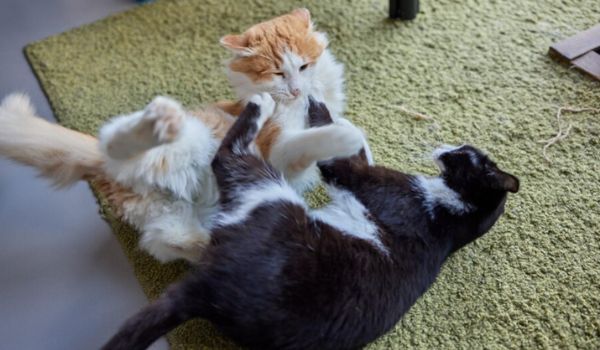
While your pets may scratch and claw on their scratching posts, happy cats shouldn’t claw at each other. Fighting cats will often have their claws out, ready to swipe or defend themselves, unlike playful cats, that more often have their claws retracted. In either case, ensure that your kitty’s nails are properly trimmed, so the impact remains minimal.
6. Look at Ears and Eyes
Ears and eyes are other key indicators that can tell you if your cats are happy or not. Happy, playful cats will often have their ears forward, upright, or slightly back. However, fighting cats may have their ears turned back, often against their head.
Cats are good at non-verbal communication, and their ears can be highly expressive. They act as an effective barometer of their emotions. During a play or fight session, if their ears are straight up or forward, it means they are probably playing.
If their ears are folded back, there is a good chance that the cat is involved in a fight, and you may need to intervene. Aggressive cats will often also stare at each other intensely, ready to jump into a scrap.
7. Check for Injuries and Stress
Playful, friendly cats shouldn’t cause any injuries to each other – and accidental injuries between furry friends are rare. So if your cats are causing harm to one another or leaving each other shaken, nervous and tense after interacting, you likely have fighting cats.
8. Physical Signs of Confrontation
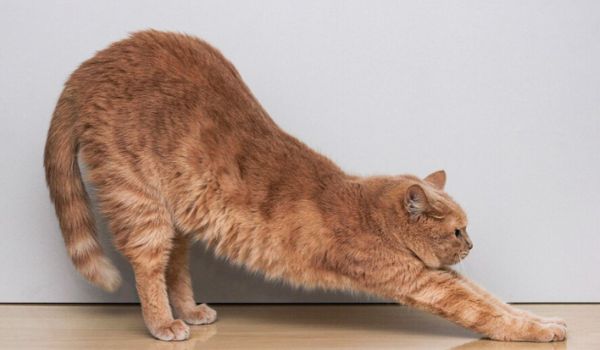
Cats’ fur will stand straight up, their tails erect and upright, and their eyes dilated if they are involved in a real fight. If their body language looks relaxed, they are probably feeling relaxed and enjoying the rough play. If they look tense, they might be scrapping for real.
Reasons Why Cats Fight Each Other
Why do some cats fight more than others? A long list of factors contributes to aggressiveness, including stress, poor socialization, and territorial conflict.
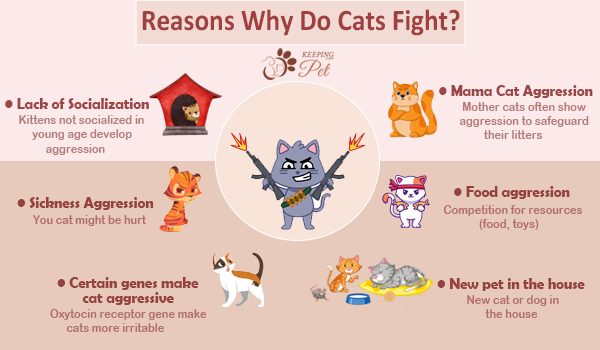
Lack of Socialization
The socialization period (2 – 9 weeks) is crucial for kittens. Hand-raised cats that have not been socialized with other cats during the critical period are undoubtedly at risk of developing problematic behaviors such as nervousness and aggression and have reduced coping mechanisms during environmental changes.
Cats cannot diffuse an aggressive situation due to limited social communication skills, so owners need to take proactive actions to resolve it. It can take a couple of hours for a cat to calm down once aggression intensifies. Once separated, it’s best to leave cats alone in a quiet room until they are fully relaxed.
New Household Members
Adding a new cat to the home or having more cats in one house adds to the tension between two groups, the old and the new. New faces in the house create offensiveness in the cats, making them feel insecure and anxious. Over time, your cats will become familiar with each other and will start commingling with them. But if they still can’t form a bond, you can intervene and apply these 6 techniques to get your cats used to each other.
Food Aggression

Food aggression can cause strife when cats from different social groups are fed in proximity and when food is scarce. Competition for resources or human attention also causes inter-cat friction.
Cats can also fight each other when they share their food bowls, litter boxes, toys, beds, etc. Ensure to make available to your all cats their own
Aggression due to Illness
Sometimes it is difficult to interpret the fighting behavior of cats when it is because of some sickness they are going through. Inter-cat conflict due to illness is commonly seen as sudden attacks without previous disagreement between the cats involved. If you see that one of your cats is a little off but shows aggression when pestered by another cat, get her checked by a vet.
Fight to Protect Kittens
Households with breeding females may also encounter episodes of aggression, especially when mothers are safeguarding their litter of kittens.
Genes Make Cats Aggressive
Problematic cat behavior is also affected by several genes: one of them is the oxytocin receptor, which has been identified as contributing to irritability, signifying that genetic testing may become an important tool in the veterinary behaviorist field.
Should I Let My Cats Playfight?
Play fighting is a normal healthy behavior in which cats will chase each other, roll around and strike each other with their paws. Play fighting is silent, gentle, and causes no injury or pain, and the claws are typically retracted.
Play fighting should be disrupted if it accelerates into hostility. Understanding your cat’s body posturing and behaviors will help prevent an aggressive situation.
Provide your cat with its own territory within your home. Encourage any new cat you bring home to create their own territory in other areas of the house via the use of objects such as cat towers. This will create harmony among them.
Reinforcement of friendly, playful interactions and reduction of aggressive behavior depends on the correct integration of a new cat and awareness of cat groups’ social dynamics in multi-cat homes.

